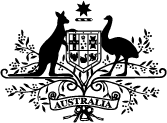The Australian Government has new funding agreements with states and the Northern Territory to put hundreds more doctors into regional, rural and remote locations.
This is a major step in bridging the city-country divide in health services around the nation – directly addressing the shortage of doctors in rural and remote areas.
The new John Flynn Prevocational Doctor Program will deliver rural primary care rotations for hospital-based prevocational doctors, enabling them to broaden their experience and skills.
The new agreements will boost the number of regional and rural doctor numbers by increasing rural medical training, improving retention of medical graduates and junior doctors in rural medical practice, and improving training continuity locally.
The John Flynn Prevocational Doctor Program started in January this year with funding of $75.75 million over three years.
The program addresses concerns raised by rural GPs who have asked for more junior doctor training places to ‘grow’ the workforce by delivering increased rural primary care rotations for hospital-based prevocational doctors in rural areas, from 440 rotations in 2022 to 1000 rotations by 2026.
Priority will be given to high need areas including those that support an Aboriginal and Torres Strait Islander workforce and service delivery.
Quotes attributable to Assistant Minister for Health and Aged Care Ged Kearney:
“We know that doctors who train in rural and remote regions are more likely to stay in the regions.
“John Flynn Prevocational Doctor Program provides a unique opportunity for doctors to live and work in rural and remote communities, build relationships with patients and increase their skillset.
“Ultimately, this new program provides patients in these areas with more stable locally trained healthcare providers that they can count on.”
Quotes attributable to Assistant Minister McCarthy:
“Ensuring that people who live in rural and regional areas can get the health care they need closer to home is a priority for the Australian Government.
“It’s important the new program sets targets of three per cent of rotations in Indigenous primary care settings including Aboriginal Community Controlled Health Organisations, and three per cent of rotations filled by Indigenous prevocational doctors.
“These targets are meaningful and they will make a real on-the-ground difference by providing culturally safe care in rural and remote communities, while also creating job opportunities for Indigenous doctors.”
Quotes attributable to Member for Lingiari Marion Scrymgour:
“Getting more junior doctors trained in regional and remote settings is a double whammy effect. There’s an immediate impact when they do their training, then a proportion of these people will stay on or come back and stay long term where they have already made relationships and can set up long term practices.
“This is a great way to help fix one of our most difficult health issues, which is getting more doctors in regional and remote communities.”
Quotes attributable to Chief Minister of the Northern Territory, Natasha Fyles:
“The Northern Territory has some of the most remote parts of Australia, and we welcome the new funding agreements to increase the number of doctors in these areas.
“Investing in the rural training program keeps doctors in our regions, benefiting the whole community, through increased access to health services and a stable and local workforce.”
